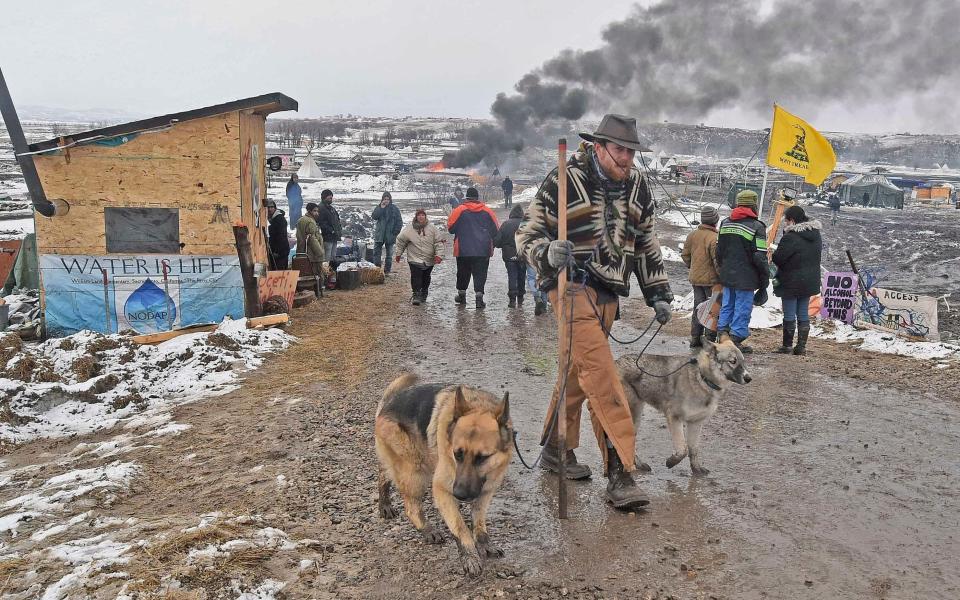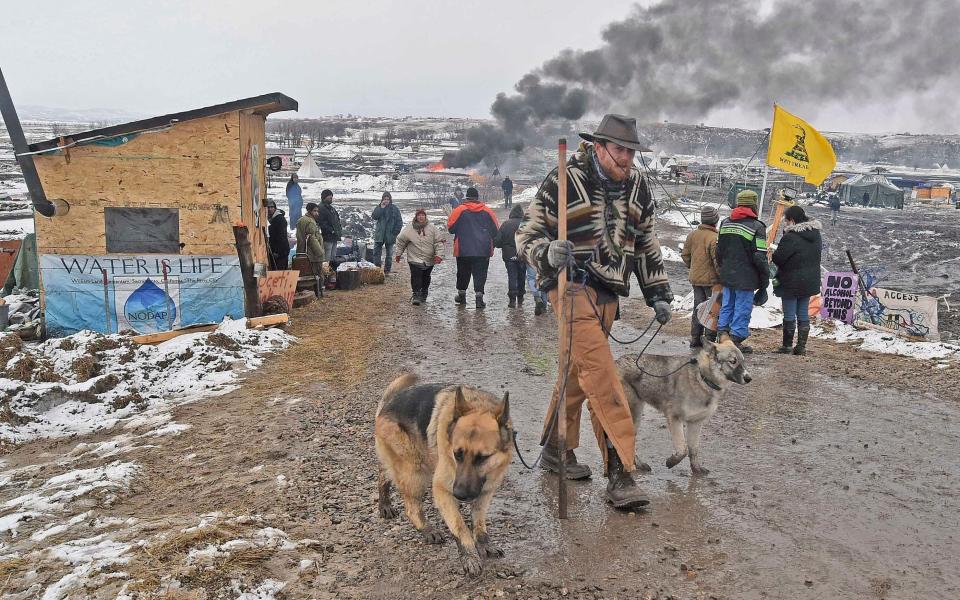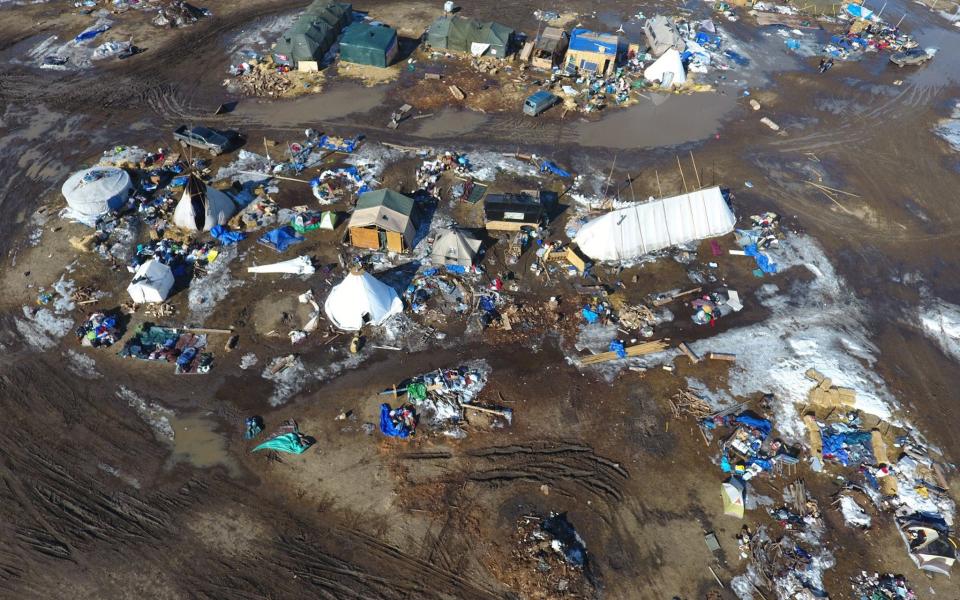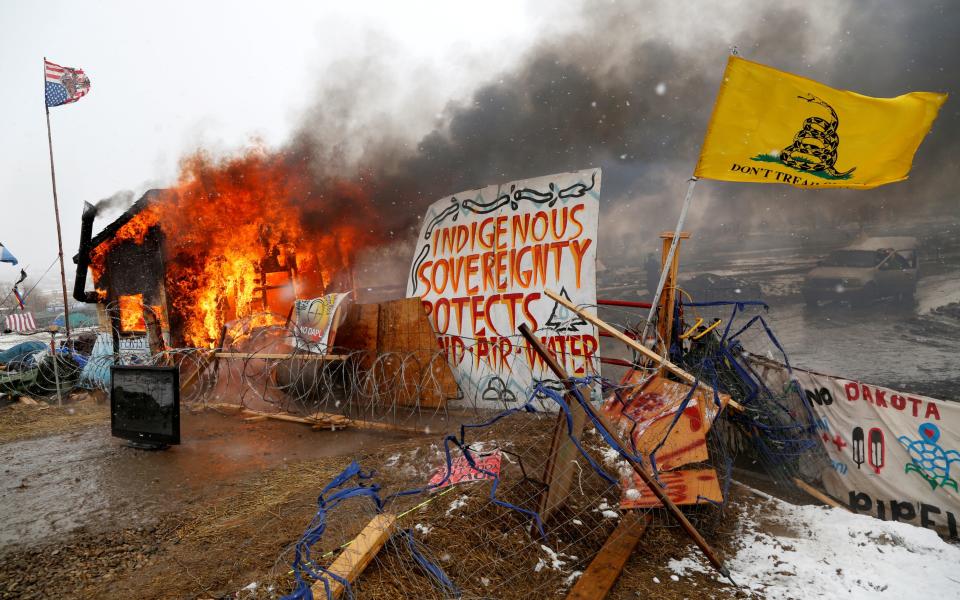North Dakota officials plead with last oil pipeline protesters to leave without arrest
Public officials in North Dakota pleaded with the remaining protesters at the Dakota Access oil pipeline camp to pack up and leave so authorities can resume cleaning up the premises without any further arrests.
Most of the campers marched out of the area ahead of Wednesday's 2pm deadline to get off the federal land, and authorities arrested 10 people who defied the order in a final show of dissent. North Dakota Governor Doug Burgum said none of the law enforcement officers left the main highway outside the camp.
"They will have every opportunity again to leave tomorrow without arrest," Burgum said Wednesday evening, referring to an estimated 25 to 50 people remaining at the camp.
Burgum said law enforcement will decide Thursday morning what to do about any remaining protesters, but noted that cleanup was scheduled to resume at 9am. Corps Col. John Henderson said the cleanup could take about a month and cost as much as $1.2 million, which ultimately would be paid by taxpayers.
The area near the Standing Rock Indian Reservation has been home to demonstrators for nearly a year as they tried to thwart construction of the pipeline. Many of the protesters left peacefully, but police made some arrests two hours after the deadline.
Earlier in the day, some of the last remnants of the camp went up in flames when occupants set fire to makeshift wooden housing as part of a leaving ceremony.
Authorities later said about 20 fires were set and two people - a 7-year-old boy and a 17-year-old girl - were taken to a Bismarck hospital to be treated for burns. Their conditions weren't given, but Burgum said the girl was airlifted to a Minneapolis hospital.
"That is very sad for all the people who were involved in that," the governor said.
After the deadline passed, as many as 75 people outside the camp started taunting officers, who brought five large vans to the scene. Police took 10 people into custody for obstructing a government function, authorities said.
Shortly before the deadline set by the US Army Corps of Engineers because of the threat of spring flooding, about 150 people marched arm-in-arm out of the soggy camp, singing and playing drums as they walked down a highway. It was not clear where they were headed. One man carried an American flag hung upside-down.
Authorities sent buses to take protesters to Bismarck, where they were offered fresh clothing, bus fare home, and food and hotel vouchers. Officials didn't immediately know how many people took up the offer, but said at least 70 were looking for transportation.
At the height of the protests, the site known as Oceti Sakowin hosted thousands of people, though its population dwindled to just a couple of hundred as the pipeline battle moved into the courts.
The camp is on federal land in North Dakota between the Standing Rock Sioux Reservation and the pipeline route that is being finished by Dallas-based Energy Transfer Partners. When complete, the project will carry oil through the Dakotas and Iowa to a shipping point in Illinois.
Some of the protesters were focused on moving off federal land and away from the flood plain into other camps. New camps are popping up on private land, including one the Cheyenne River Sioux set up about a mile from the main camp.
Nathan Phillips, a member of the Omaha Tribe in Nebraska, said he was moving to a new camp in the area because "there's still work to be done." He has been in North Dakota since Thanksgiving and said he's had "four showers since."
Matthew Bishop, from Ketchikan, Alaska, packed up Wednesday and said he too was headed to a camp on private land.
"We're going to regroup and see what we can do," Bishop said.

 Yahoo News
Yahoo News 



